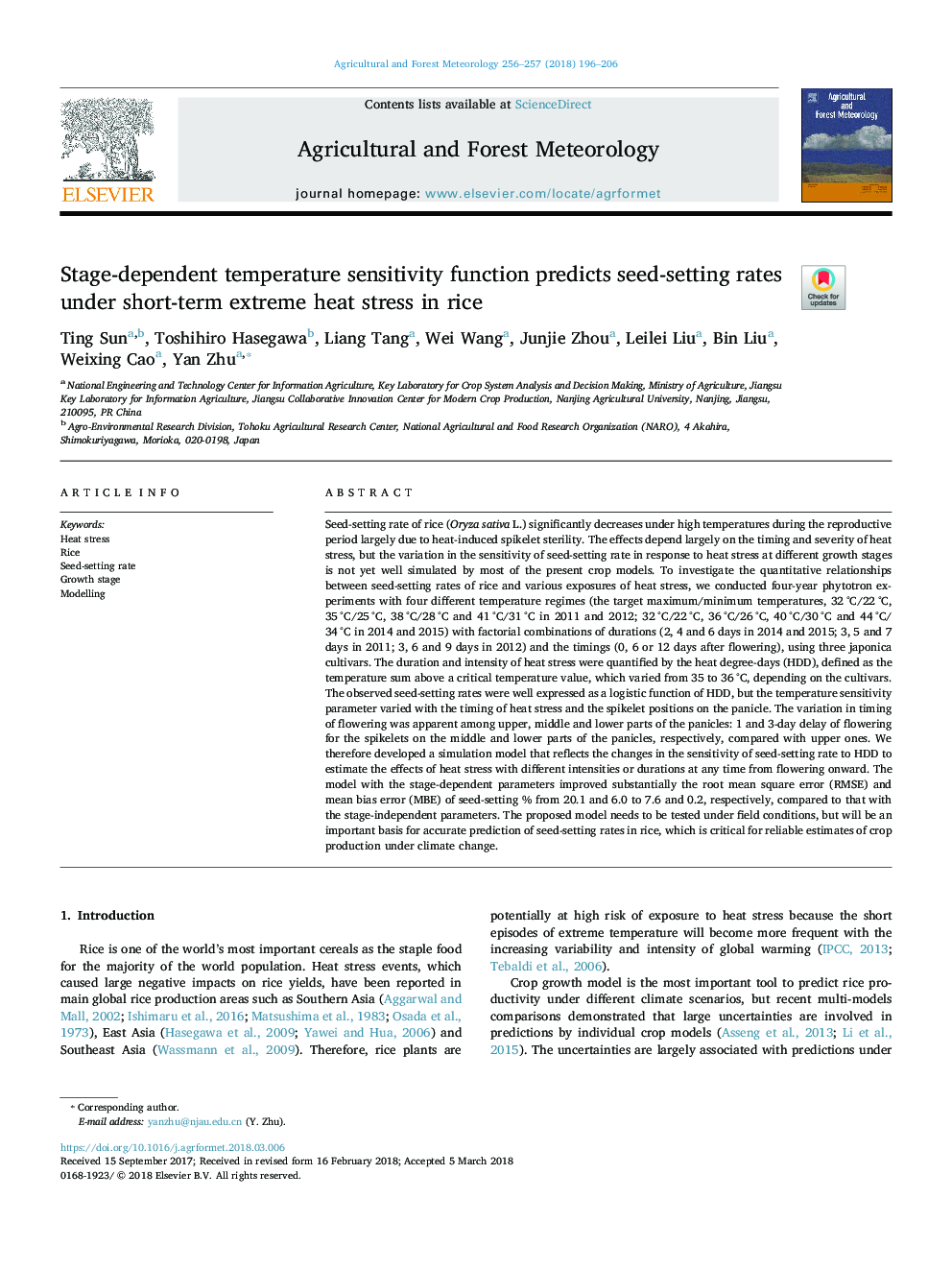| Article ID | Journal | Published Year | Pages | File Type |
|---|---|---|---|---|
| 6536692 | Agricultural and Forest Meteorology | 2018 | 11 Pages |
Abstract
Seed-setting rate of rice (Oryza sativa L.) significantly decreases under high temperatures during the reproductive period largely due to heat-induced spikelet sterility. The effects depend largely on the timing and severity of heat stress, but the variation in the sensitivity of seed-setting rate in response to heat stress at different growth stages is not yet well simulated by most of the present crop models. To investigate the quantitative relationships between seed-setting rates of rice and various exposures of heat stress, we conducted four-year phytotron experiments with four different temperature regimes (the target maximum/minimum temperatures, 32â¯Â°C/22â¯Â°C, 35â¯Â°C/25â¯Â°C, 38â¯Â°C/28â¯Â°C and 41â¯Â°C/31â¯Â°C in 2011 and 2012; 32â¯Â°C/22â¯Â°C, 36â¯Â°C/26â¯Â°C, 40â¯Â°C/30â¯Â°C and 44â¯Â°C/34â¯Â°C in 2014 and 2015) with factorial combinations of durations (2, 4 and 6 days in 2014 and 2015; 3, 5 and 7 days in 2011; 3, 6 and 9 days in 2012) and the timings (0, 6 or 12 days after flowering), using three japonica cultivars. The duration and intensity of heat stress were quantified by the heat degree-days (HDD), defined as the temperature sum above a critical temperature value, which varied from 35 to 36â¯Â°C, depending on the cultivars. The observed seed-setting rates were well expressed as a logistic function of HDD, but the temperature sensitivity parameter varied with the timing of heat stress and the spikelet positions on the panicle. The variation in timing of flowering was apparent among upper, middle and lower parts of the panicles: 1 and 3-day delay of flowering for the spikelets on the middle and lower parts of the panicles, respectively, compared with upper ones. We therefore developed a simulation model that reflects the changes in the sensitivity of seed-setting rate to HDD to estimate the effects of heat stress with different intensities or durations at any time from flowering onward. The model with the stage-dependent parameters improved substantially the root mean square error (RMSE) and mean bias error (MBE) of seed-setting % from 20.1 and 6.0 to 7.6 and 0.2, respectively, compared to that with the stage-independent parameters. The proposed model needs to be tested under field conditions, but will be an important basis for accurate prediction of seed-setting rates in rice, which is critical for reliable estimates of crop production under climate change.
Keywords
Related Topics
Physical Sciences and Engineering
Earth and Planetary Sciences
Atmospheric Science
Authors
Ting Sun, Toshihiro Hasegawa, Liang Tang, Wei Wang, Junjie Zhou, Leilei Liu, Bin Liu, Weixing Cao, Yan Zhu,
